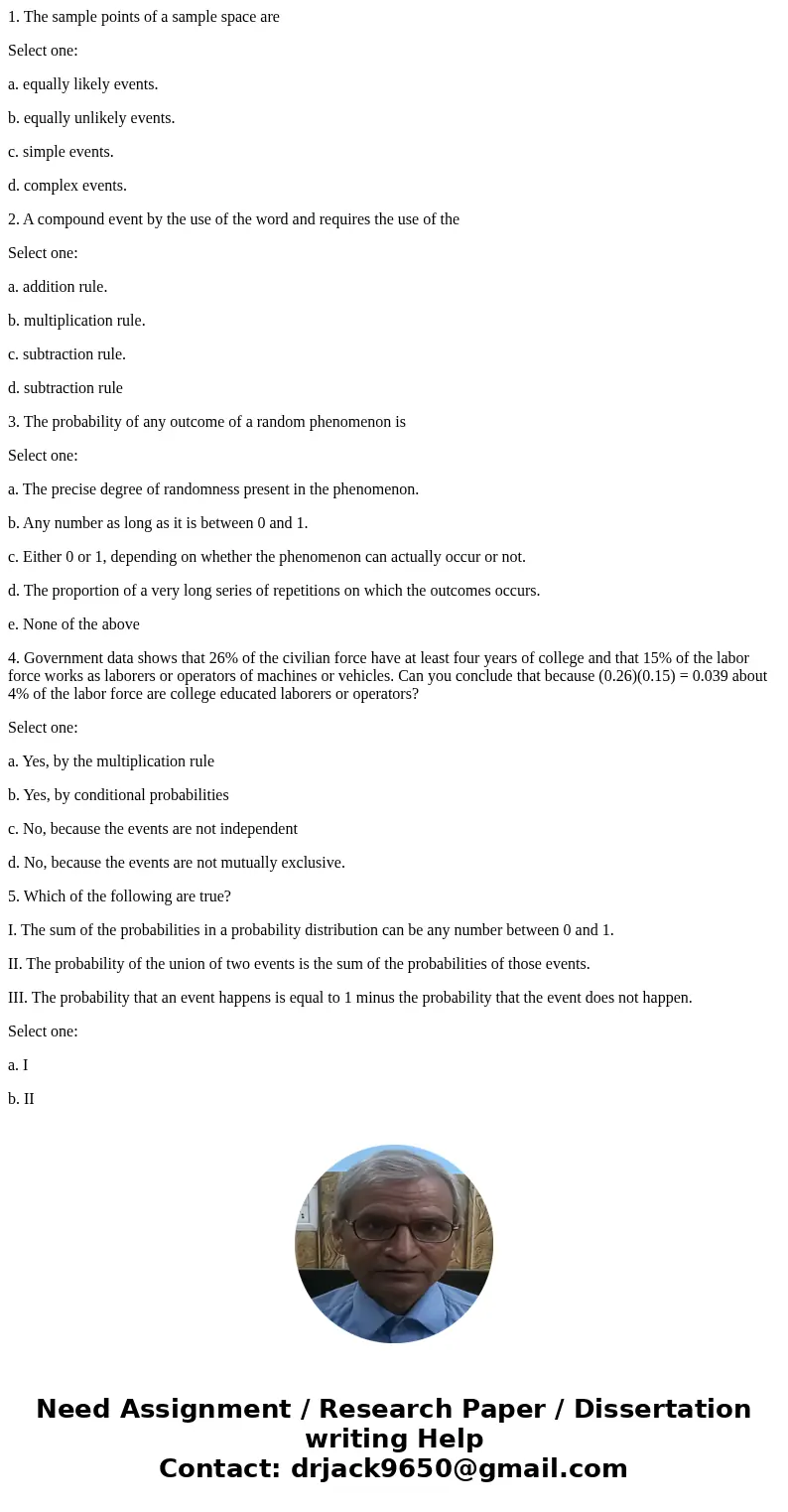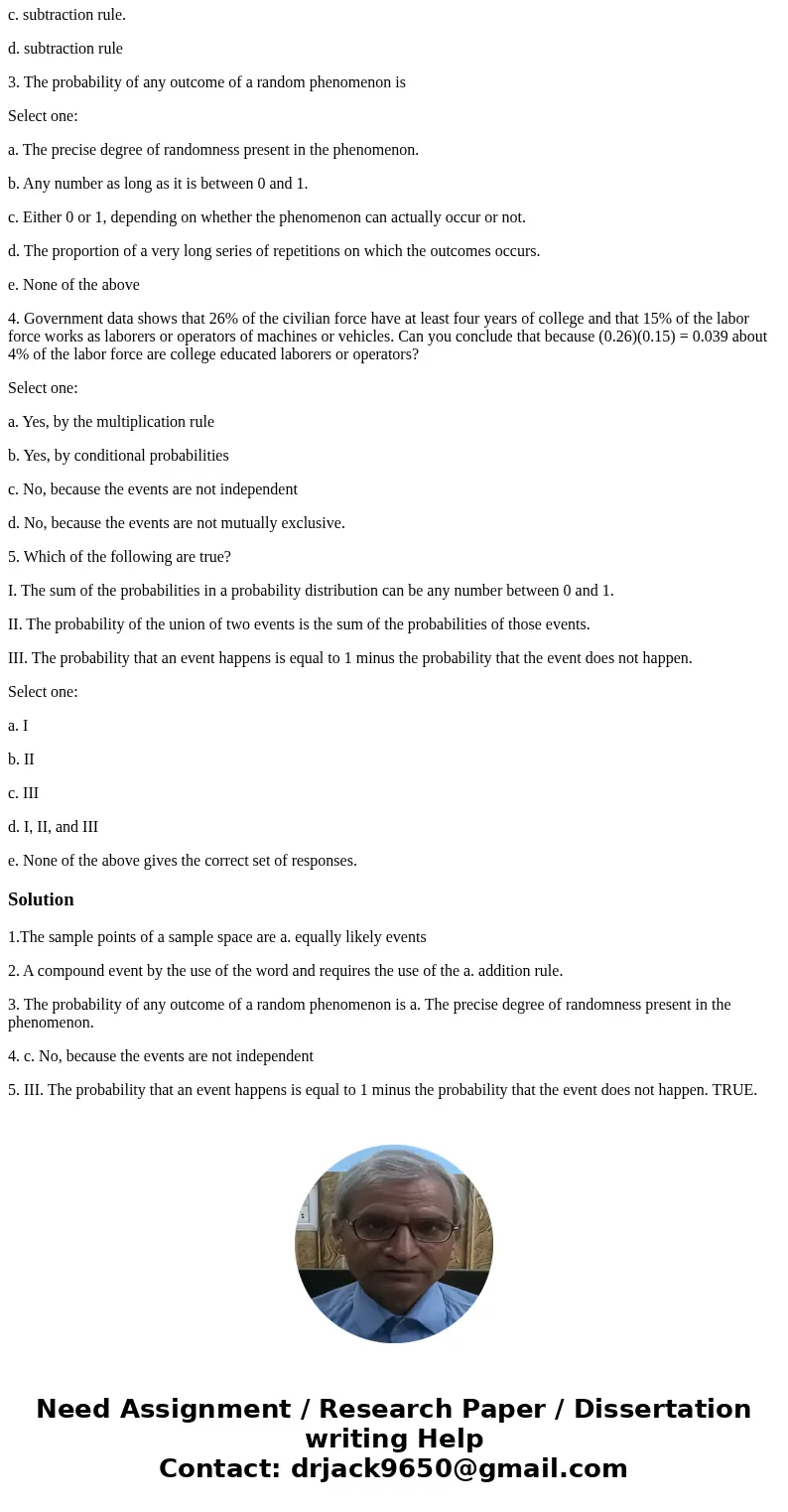1 The sample points of a sample space are Select one a equal
1. The sample points of a sample space are
Select one:
a. equally likely events.
b. equally unlikely events.
c. simple events.
d. complex events.
2. A compound event by the use of the word and requires the use of the
Select one:
a. addition rule.
b. multiplication rule.
c. subtraction rule.
d. subtraction rule
3. The probability of any outcome of a random phenomenon is
Select one:
a. The precise degree of randomness present in the phenomenon.
b. Any number as long as it is between 0 and 1.
c. Either 0 or 1, depending on whether the phenomenon can actually occur or not.
d. The proportion of a very long series of repetitions on which the outcomes occurs.
e. None of the above
4. Government data shows that 26% of the civilian force have at least four years of college and that 15% of the labor force works as laborers or operators of machines or vehicles. Can you conclude that because (0.26)(0.15) = 0.039 about 4% of the labor force are college educated laborers or operators?
Select one:
a. Yes, by the multiplication rule
b. Yes, by conditional probabilities
c. No, because the events are not independent
d. No, because the events are not mutually exclusive.
5. Which of the following are true?
I. The sum of the probabilities in a probability distribution can be any number between 0 and 1.
II. The probability of the union of two events is the sum of the probabilities of those events.
III. The probability that an event happens is equal to 1 minus the probability that the event does not happen.
Select one:
a. I
b. II
c. III
d. I, II, and III
e. None of the above gives the correct set of responses.
Solution
1.The sample points of a sample space are a. equally likely events
2. A compound event by the use of the word and requires the use of the a. addition rule.
3. The probability of any outcome of a random phenomenon is a. The precise degree of randomness present in the phenomenon.
4. c. No, because the events are not independent
5. III. The probability that an event happens is equal to 1 minus the probability that the event does not happen. TRUE.


 Homework Sourse
Homework Sourse